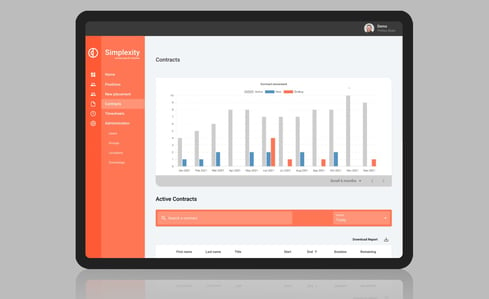The significant change in female respondents’ in recent years, and indeed contracting roles for women in general within traditionally male-dominated industries can be attributed to a number of different reasons we discuss below.
Making Strides: Companies Pushing for Gender Diversity in the Workplace
Firstly, there has been a growing awareness and acknowledgement of the importance of gender diversity in the workplace. Many companies and organisations are making a concerted effort to increase the representation of women in all areas of their operations, including contracting roles. This may include initiatives such as setting targets for gender diversity, providing training and mentoring programs for women, and implementing policies that promote greater work-life balance and flexibility. The tech industry in particular has traditionally been very male-dominated, with a significant gender gap in terms of employment and pay. However, in recent years, there has been a push for more diversity and inclusion in the tech sector with notable efforts to increase the representation of women.
Diversity breeds innovation
Secondly, there has been an increasing recognition of the value that women can bring to these industries. Research has shown that diverse teams are more innovative, make better decisions and are more effective than homogenous teams. As a result, companies and organisations are actively seeking to attract and retain talented women in contracting roles.
Changing Gender Roles
Thirdly, societal attitudes towards gender roles are evolving. Women are increasingly viewed as equal partners in the workforce, with many breaking down traditional barriers and stereotypes. This has led to a shift in the types of jobs and roles that women are willing and able to pursue, including contracting roles within traditionally male-dominated industries.
The Contributing Role of Flexible and Remote Work Options
Finally, the increasing availability of flexible working arrangements and remote work options may be helping to attract and retain more women in contracting roles. This can help to reduce some of the barriers that women may face when balancing work and family responsibilities and can allow them to work in roles that may have previously been inaccessible due to geographical constraints.
In conclusion
The increasing number of women in contracting roles within traditionally male-dominated industries can be attributed to a multitude of factors. However, despite this progress, there is still a considerable amount of work to be done in addressing gender inequality in the workplace.
The latest women in tech statistics reveal the percentage of overall female representation in tech jobs sits firmly at 26.7% which, compared to 2019, is only a 4.3% increase. Although this may only seem like a small step, it is certainly a positive sign in the right direction.
Nonetheless, women in contracting like women in many other industries, still continue to face obstacles related to pay equity, career advancement, and work-life balance. However the tide is beginning to turn and the trend towards increased representation of women in contracting is a very positive development, signalling a step towards greater gender equality in the workplace, and a promising future for women in business.
To understand more insights into the changing face and key trends of the post-pandemic contracting world, head to Oncore’s State of Contracting survey report 2023












_11zon%20(1).jpg?width=302&height=124&name=linkedin-sales-solutions-vqWWOnA6--M-unsplash%20(2)_11zon%20(1).jpg)






